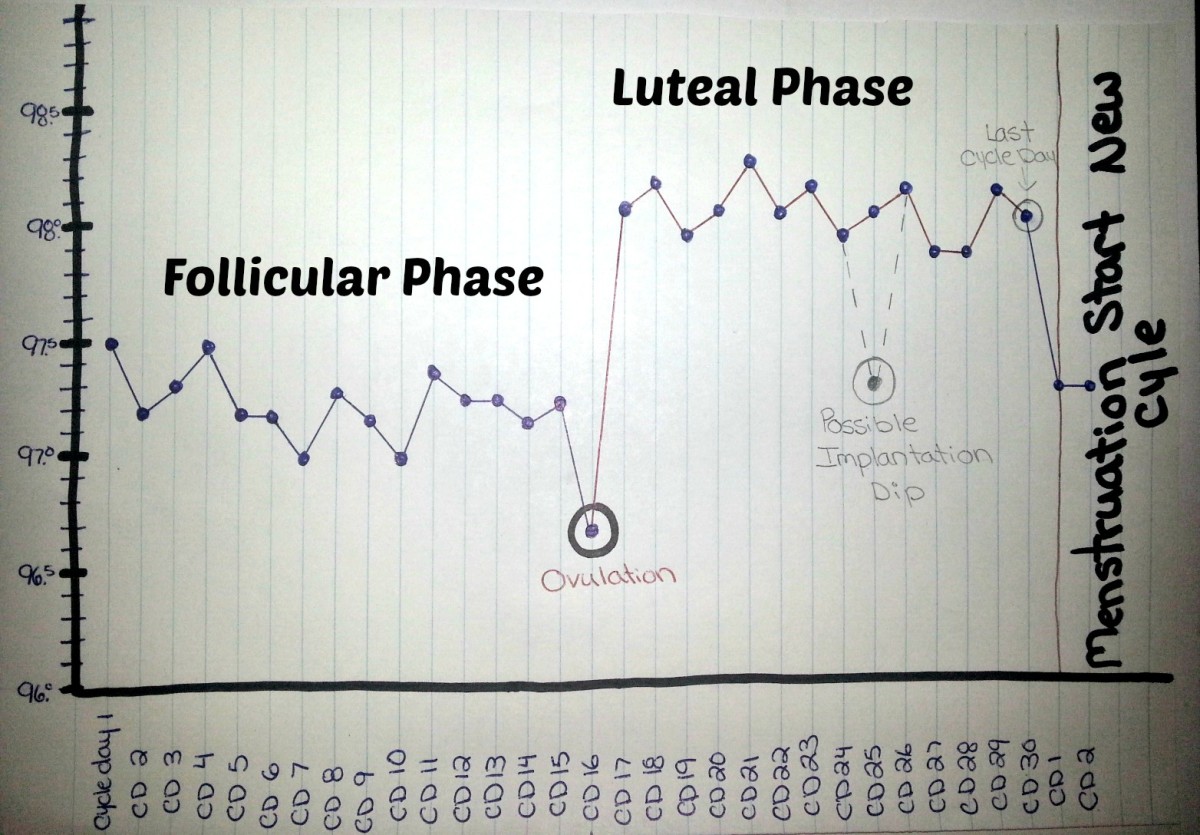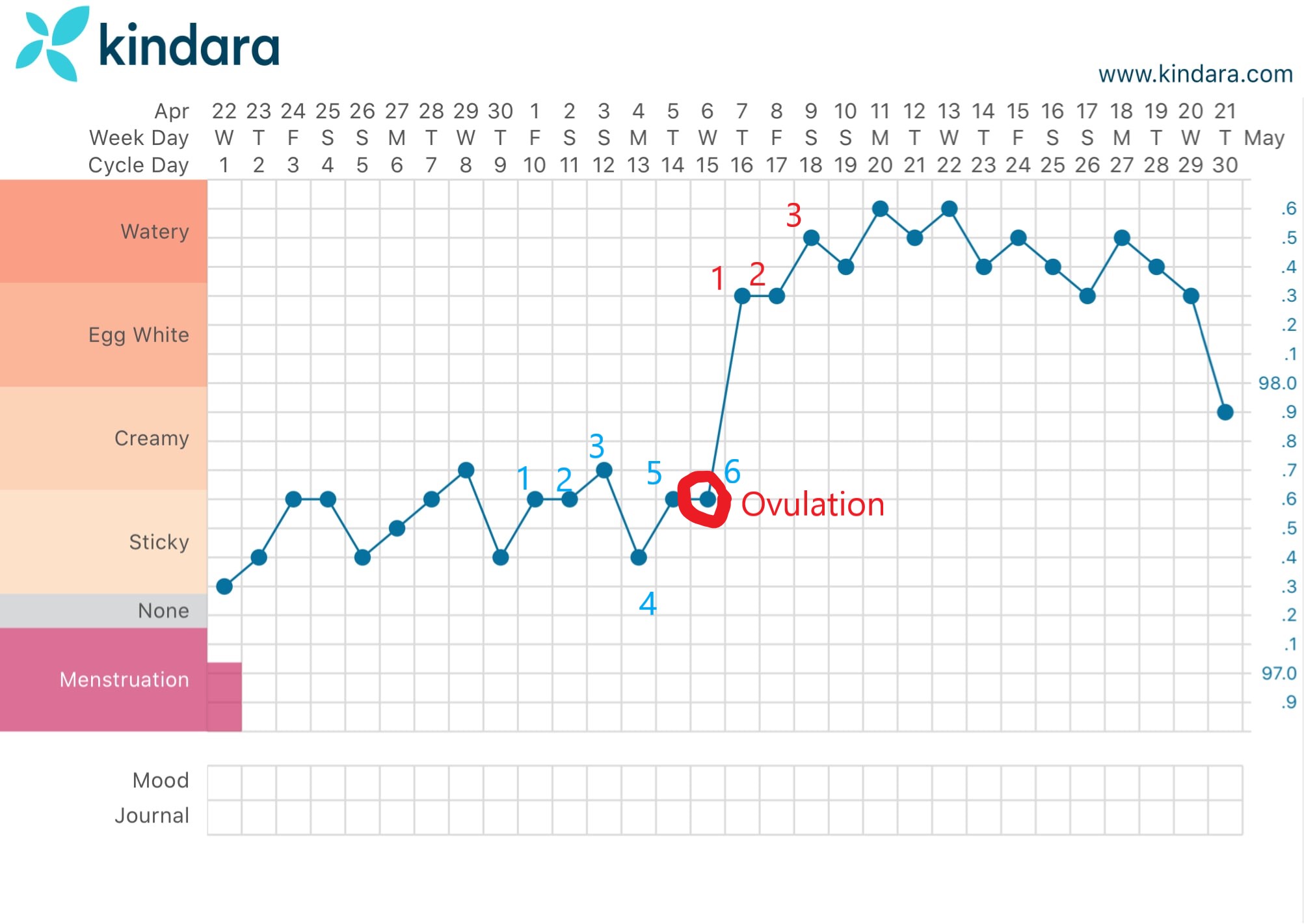Bbt Drop After Ovulation
Bbt Drop After Ovulation - But the day after you ovulate, you should see an uptick of 0.5 to 1.0. Once you start your period, your bbt will probably drop and stay down for however long your period lasts. If fertilization does not occur, the fall in progesterone causes the temperature to again. What's a normal basal body temperature? The basal body temperature can drop before (a rise in estrogen) and after ovulation. Before ovulation, your bbt may range from about 97 to 98 degrees f (97.2 to 97.7 degrees f, to be more exact). Typically, after you ovulate, your bbt stays elevated for several days. In the second case, a decrease in bbt occurs due to implantation of the embryo, with hormonal imbalance, or before the beginning of the period. Discover the reasons why the basal body temperature (bbt) might unexpectedly drop after ovulation. What does a drop in bbt after ovulation mean?
Before ovulation, your bbt may range from about 97 to 98 degrees f (97.2 to 97.7 degrees f, to be more exact). What's a normal basal body temperature? If fertilization does not occur, the fall in progesterone causes the temperature to again. In the second case, a decrease in bbt occurs due to implantation of the embryo, with hormonal imbalance, or before the beginning of the period. But the day after you ovulate, you should see an uptick of 0.5 to 1.0. What does a drop in bbt after ovulation mean? Discover the reasons why the basal body temperature (bbt) might unexpectedly drop after ovulation. The basal body temperature can drop before (a rise in estrogen) and after ovulation. Typically, after you ovulate, your bbt stays elevated for several days. The bbt drop after ovulation is a natural occurrence influenced by hormonal changes in the menstrual cycle.
What's a normal basal body temperature? Before ovulation, your bbt may range from about 97 to 98 degrees f (97.2 to 97.7 degrees f, to be more exact). But the day after you ovulate, you should see an uptick of 0.5 to 1.0. Once you start your period, your bbt will probably drop and stay down for however long your period lasts. What does a drop in bbt after ovulation mean? The basal body temperature can drop before (a rise in estrogen) and after ovulation. Discover the reasons why the basal body temperature (bbt) might unexpectedly drop after ovulation. If fertilization does not occur, the fall in progesterone causes the temperature to again. The bbt drop after ovulation is a natural occurrence influenced by hormonal changes in the menstrual cycle. Typically, after you ovulate, your bbt stays elevated for several days.
How to Chart Basal Body Temperature WeHaveKids
What does a drop in bbt after ovulation mean? The basal body temperature can drop before (a rise in estrogen) and after ovulation. What's a normal basal body temperature? Once you start your period, your bbt will probably drop and stay down for however long your period lasts. In the second case, a decrease in bbt occurs due to implantation.
Why would the BBT drop after ovulation? Fertility Cloud
The basal body temperature can drop before (a rise in estrogen) and after ovulation. If fertilization does not occur, the fall in progesterone causes the temperature to again. But the day after you ovulate, you should see an uptick of 0.5 to 1.0. Before ovulation, your bbt may range from about 97 to 98 degrees f (97.2 to 97.7 degrees.
BBT Charting Top 10 Questions about Basal Body Temperatures
In the second case, a decrease in bbt occurs due to implantation of the embryo, with hormonal imbalance, or before the beginning of the period. Once you start your period, your bbt will probably drop and stay down for however long your period lasts. What's a normal basal body temperature? The basal body temperature can drop before (a rise in.
BBT drop day after 'ovulation'
In the second case, a decrease in bbt occurs due to implantation of the embryo, with hormonal imbalance, or before the beginning of the period. Typically, after you ovulate, your bbt stays elevated for several days. But the day after you ovulate, you should see an uptick of 0.5 to 1.0. If fertilization does not occur, the fall in progesterone.
BBT rise then drop after ovulation r/TFABChartStalkers
If fertilization does not occur, the fall in progesterone causes the temperature to again. Typically, after you ovulate, your bbt stays elevated for several days. The basal body temperature can drop before (a rise in estrogen) and after ovulation. What does a drop in bbt after ovulation mean? Before ovulation, your bbt may range from about 97 to 98 degrees.
When Does BBT Drop If Not Pregnant? When Does It Rise? And More
If fertilization does not occur, the fall in progesterone causes the temperature to again. In the second case, a decrease in bbt occurs due to implantation of the embryo, with hormonal imbalance, or before the beginning of the period. Before ovulation, your bbt may range from about 97 to 98 degrees f (97.2 to 97.7 degrees f, to be more.
How To Detect Ovulation On Bbt Chart Chart Walls
What's a normal basal body temperature? Typically, after you ovulate, your bbt stays elevated for several days. Discover the reasons why the basal body temperature (bbt) might unexpectedly drop after ovulation. The basal body temperature can drop before (a rise in estrogen) and after ovulation. Once you start your period, your bbt will probably drop and stay down for however.
Why would the BBT drop after ovulation? Fertility Cloud
What does a drop in bbt after ovulation mean? Typically, after you ovulate, your bbt stays elevated for several days. The bbt drop after ovulation is a natural occurrence influenced by hormonal changes in the menstrual cycle. If fertilization does not occur, the fall in progesterone causes the temperature to again. What's a normal basal body temperature?
How Long After Ovulation Does BBT Rise?
Once you start your period, your bbt will probably drop and stay down for however long your period lasts. The bbt drop after ovulation is a natural occurrence influenced by hormonal changes in the menstrual cycle. What does a drop in bbt after ovulation mean? The basal body temperature can drop before (a rise in estrogen) and after ovulation. In.
Basal Body Temperature Definition And Charts Clearblue, 59 OFF
What's a normal basal body temperature? But the day after you ovulate, you should see an uptick of 0.5 to 1.0. The basal body temperature can drop before (a rise in estrogen) and after ovulation. The bbt drop after ovulation is a natural occurrence influenced by hormonal changes in the menstrual cycle. What does a drop in bbt after ovulation.
If Fertilization Does Not Occur, The Fall In Progesterone Causes The Temperature To Again.
What does a drop in bbt after ovulation mean? The basal body temperature can drop before (a rise in estrogen) and after ovulation. Discover the reasons why the basal body temperature (bbt) might unexpectedly drop after ovulation. In the second case, a decrease in bbt occurs due to implantation of the embryo, with hormonal imbalance, or before the beginning of the period.
Typically, After You Ovulate, Your Bbt Stays Elevated For Several Days.
The bbt drop after ovulation is a natural occurrence influenced by hormonal changes in the menstrual cycle. Before ovulation, your bbt may range from about 97 to 98 degrees f (97.2 to 97.7 degrees f, to be more exact). What's a normal basal body temperature? Once you start your period, your bbt will probably drop and stay down for however long your period lasts.









